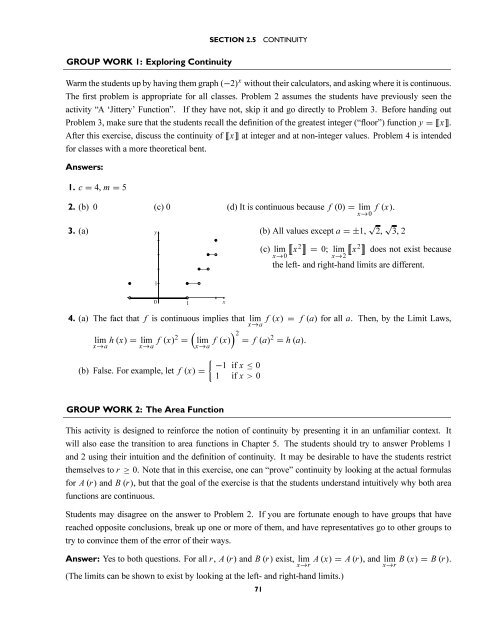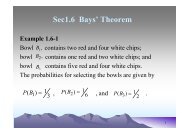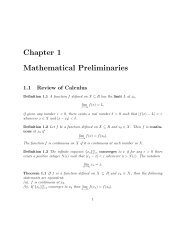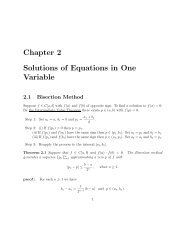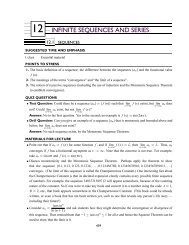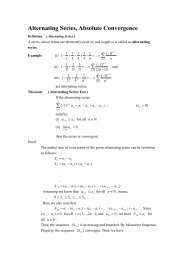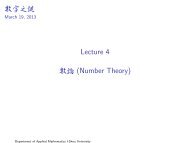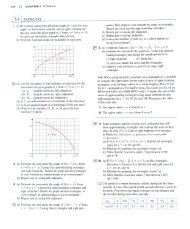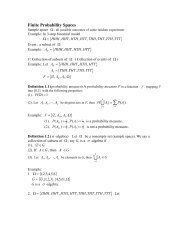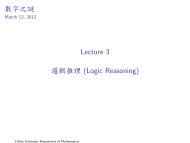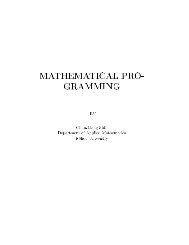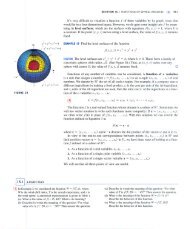2 LIMITS
2 LIMITS
2 LIMITS
Create successful ePaper yourself
Turn your PDF publications into a flip-book with our unique Google optimized e-Paper software.
SECTION 2.5CONTINUITYGROUP WORK 1: Exploring ContinuityWarm the students up by having them graph (−2) x without their calculators, and asking where it is continuous.The first problem is appropriate for all classes. Problem 2 assumes the students have previously seen theactivity “A ‘Jittery’ Function”. If they have not, skip it and go directly to Problem 3. Before handing outProblem 3, make sure that the students recall the definition of the greatest integer (“floor”) function y = [[x]].After this exercise, discuss the continuity of [[x]] at integer and at non-integer values. Problem 4 is intendedfor classes with a more theoretical bent.Answers:1. c = 4, m = 52. (b) 0 (c) 0 (d) It is continuous because f (0) = limx→0f (x).3. (a)y(b) All values except a =±1, √ 2, √ 3, 2[(c) lim x2 ] [ = 0; lim x2 ] does not exist becausex→0 x→2the left- and right-hand limits are different.101x4. (a) The fact that f is continuous implies that lim f (x) = f (a) for all a. Then, by the Limit Laws,x→a( ) 2lim h (x) = lim f x→a x→a (x)2 = lim f (x) = f (a) 2 = h (a).x→a(b) False. For example, let f (x) ={ −1 if x ≤ 01 if x > 0GROUP WORK 2: The Area FunctionThis activity is designed to reinforce the notion of continuity by presenting it in an unfamiliar context. Itwill also ease the transition to area functions in Chapter 5. The students should try to answer Problems 1and 2 using their intuition and the definition of continuity. It may be desirable to have the students restrictthemselves to r ≥ 0. Note that in this exercise, one can “prove” continuity by looking at the actual formulasfor A (r) and B (r), but that the goal of the exercise is that the students understand intuitively why both areafunctions are continuous.Students may disagree on the answer to Problem 2. If you are fortunate enough to have groups that havereached opposite conclusions, break up one or more of them, and have representatives go to other groups totry to convince them of the error of their ways.Answer: Yes to both questions. For all r, A (r) and B (r) exist, lim A (x) = A (r), and lim B (x) = B (r).x→r x→r(The limits can be shown to exist by looking at the left- and right-hand limits.)71


